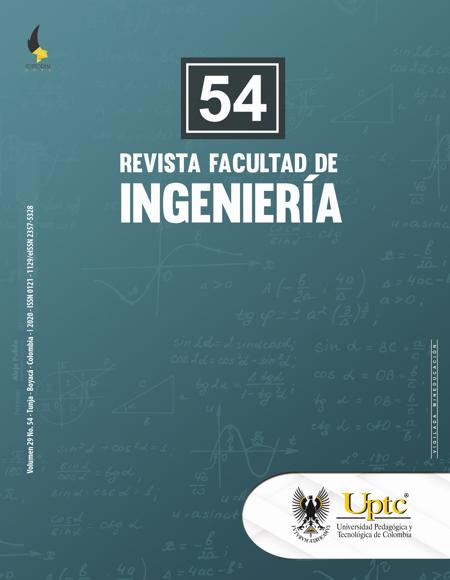SAM: modelo híbrido preliminar para apoyar la transformación ágil a gran escala en industrias de software

Resumen
Los enfoques ágiles escalados se han convertido en una alternativa que permite sincronizar las actividades e interacciones entre equipos grandes de desarrollo. Sin embargo, éstos no describen los aspectos fundamentales para transformar/evaluar el enfoque actual de una organización. Este artículo presenta la estrategia de armonización utilizada para obtener un modelo híbrido preliminar, denominado SAM, para apoyar la transformación ágil a gran escala en industrias de software. Este modelo ha sido obtenido a partir de la homogeneización, comparación e integración de las prácticas en común de modelos escalados como SAFe, LeSS, Nexus y DAD. El modelo híbrido obtenido describe los atributos fundamentales para tener en cuenta para empezar la transformación o evaluar un enfoque escalado, para esto, establece y describe 18 prácticas documentadas que indican que tener en cuenta para escalar/evaluar un enfoque a gran escala utilizado por una empresa de software. Con los resultados obtenidos, se puede observar que SAFe, LeSS, Nexus y DAD tiene aspectos en común, y que ha sido posible unificarlos en SAM; por lo tanto, la estrategia de armonización presentada y el modelo propuesto podrían ser de gran utilidad para profesionales, consultores y empresas que intentan transformar/evaluar sus enfoques.
Palabras clave
agilidad, desarrollo de software ágil, escalar, marco
Biografía del autor/a
Cristian Esthibel Gómez-Campo
Roles: Investigación, Análisis formal.
Tania Guadalupe Cañizares-Hernández
Roles: Investigación, Análisis formal.
César Jesús Pardo-Calvache, Ph. D.
Roles: Investigación, Supervisión, Metodología, Validación, Escritura - revisión y edición.
Citas
[1] T. Dingsøyr, and N. B. Moe, “Towards principles of large-scale agile development,” in International Conference on Agile Software Development, 2014, pp. 1-8. https://doi.org/10.1007/978-3-319-14358-3_1
[2] J. M. Bass, “Artefacts and agile method tailoring in large-scale offshore software development programmes,” Information and Software Technology, vol. 75, pp. 1-16, 2016. https://doi.org/10.1016/j.infsof.2016.03.001
[3] M. Kalenda, “Scaling agile software development in large organizations,” Master Thesis, Masaryk University, Czech Republic, 2017.
[4] K. Schwaber, and J. Sutherland, The definitive guide to scrum: The rules of the game, 2017. https://bit.ly/2t35PVl
[5] S. Amber, Agile unified process, 2006. https://goo.gl/Pp2Yih
[6] K. Beck, Extreme Programming. A Gentle Introduction, 2013. https://bit.ly/1d2TP1e
[7] C. Ebert and M. Paasivaara, “Scaling agile,” IEEE Software, vol. 34 (6), pp. 98-103, 2017. https://doi.org/10.1109/MS.2017.4121226
[8] K. Dikert, M. Paasivaara, and C. Lassenius, “Challenges and success factors for large-scale agile transformations: A systematic literature review,” Journal of Systems and Software, vol. 119, pp. 87-108, 2016. https://doi.org/10.1016/j.jss.2016.06.013
[9] F. O. Bjørnson, J. Wijnmaalen, C. J. Stettina, and T. Dingsøyr, “Inter-team coordination in large-scale agile development: A case study of three enabling mechanisms,” in International Conference on Agile Software Development, 2018, pp. 216-231. https://doi.org/10.1007/978-3-319-91602-6_15
[10] D. Leffingwell, Scaled Agile Framework – SAFe for Lean Enterprises, 2019. https://bit.ly/2FAcOu5
[11] L. Craig and V. Bas, LeSS Framework - Large Scale Scrum (LeSS), 2018. https://bit.ly/2BKJU78
[12] K. Schwaber, Nexus Guide - The Definitive Guide to scaling Scrum with Nexus: The Rules of the Game, 2018. https://bit.ly/2GNKKoe
[13] DAD, Disciplined Agile Delivery, 2019. https://bit.ly/3fccRL5
[14] I. Stojanov, O. Turetken, and J. J. Trienekens, “A maturity model for scaling agile development,” in Euromicro Conference on Software Engineering and Advanced Applications, 2015, pp. 446-453. https://doi.org/10.1109/SEAA.2015.29
[15] T. Cañizares, C. Gómez, and C. Pardo, “What is there about scaling of agile software development? preliminary findings from a systematic mapping study,” in XIV Jornadas Iberoamericanas de Ingeniería de Software e Ingeniería del Conocimiento, 2019, pp. 83-96.
[16] M. Alqudah, and R. Razali, “A review of scaling agile methods in large software development,” International Journal on Advanced Science, Engineering and Information Technology, vol. 6 (6), pp. 828-837, 2016. https://doi.org/10.18517/ijaseit.6.6.1374
[17] C. Pardo, “A framework to support the harmonization between multiple models and standards,” Doctoral Thesis, Universidad de Castilla-La Mancha, Ciudad Real, Spain, 2012.
[18] C. Pardo, F. J. Pino, F. García, M. Piattini, M. T. Baldassarre, and S. Lemus, “Homogenization, comparison and integration: A harmonizing strategy for the unification of multi-models in the banking sector,” in Product-Focused Software Process Improvement, 2011, pp. 59-72. https://doi.org/10.1007/978-3-642-21843-9_7
[19] F. J. Pino, M. T. Baldassarre, M. Piattini, and G. Visaggio, “Harmonizing maturity levels from CMMI-DEV and ISO/IEC 15504,” Journal of Software Maintenance and Evolution: Research and Practice, vol. 22 (4), pp. 279-296, 2010. https://doi.org/10.1002/spip.437
[20] C. Pardo, F. J. Pino, and F. Garcia, “Towards an integrated management system (IMS), harmonizing the ISO/IEC 27001 and ISO/IEC 20000-2 standards,” International Journal of Software Engineering and Its Applications, vol. 10 (9), pp. 217-230, 2016. http://doi.org/10.14257/ijseia.2016.10.9.18
[21] C. VersionOne, 13th annual state of Agile survey, 2019. https://bit.ly/2A6Bbyc
[22] C. Pardo, F. Pino, F. Garcia, M. Piattini, and M. Baldassarre, “Método de integración para soportar la armonización de múltiples modelos y estándares,” in XVI Jornadas de Ingeniería del Software y Bases de Datos, 2011, pp. 625-638.